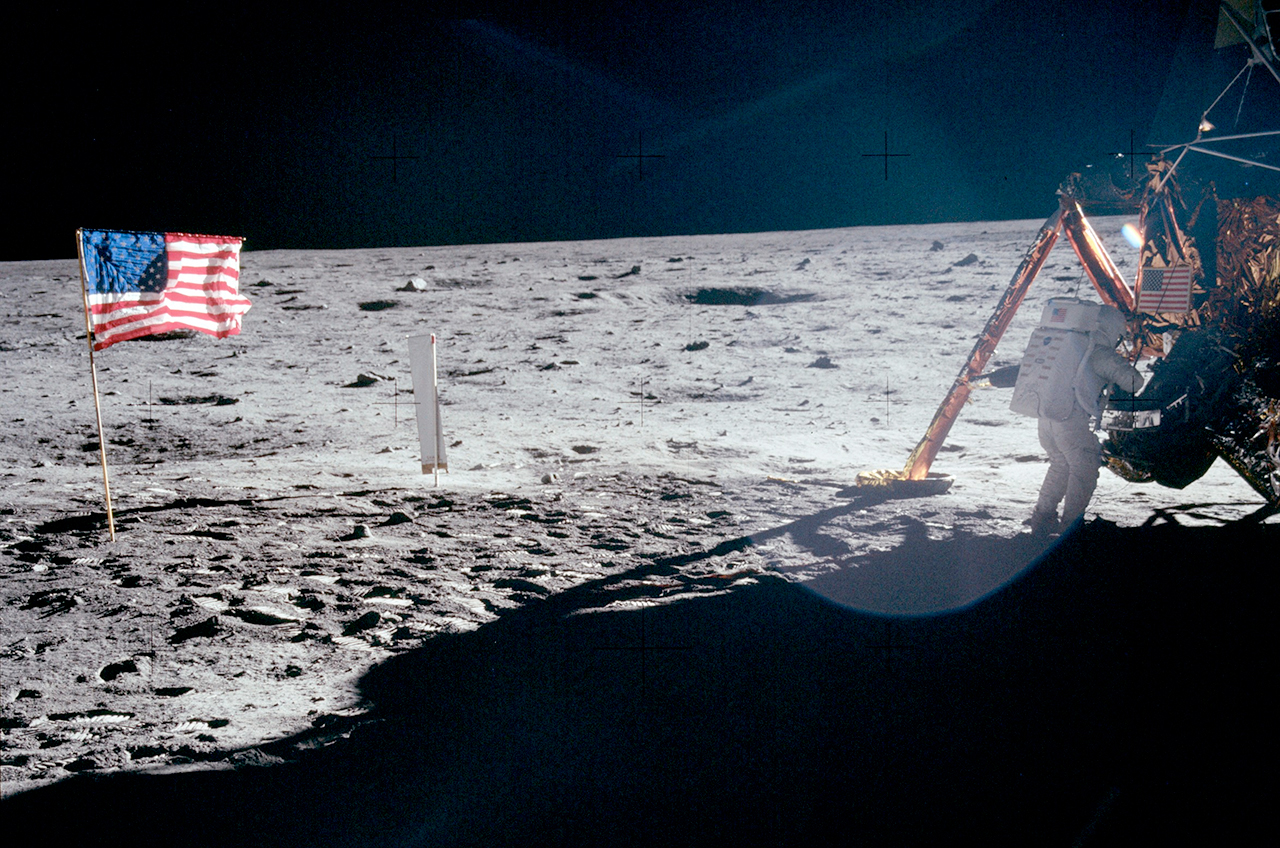Neil Armstrong's Photo Legacy: Rare Views of First Man on the Moon

There is only one photograph of Neil Armstrong walking on the moon, and in it, he has his back to the camera.
The first man to set foot on a planetary body other than Earth was not camera shy. It was just that for most of the time he and Buzz Aldrin were exploring the moon in July 1969, the checklist called for Armstrong to have their only camera.
When the news broke Saturday (Aug. 25) that Armstrong, 82, had passed away, it is likely that many people's memories of the first man on the moon were of black and white television images or color film stills. If they did recall a photo captured during the Apollo 11 moonwalk, it was almost certainly one of Aldrin, whether it was of him saluting the flag or looking down at his bootprint.
In fact, perhaps the most iconic photo taken of an astronaut on the surface of the moon is also of Aldrin. A posed shot, he is facing the camera with the reflection of his photographer, Armstrong, caught in Aldrin's golden helmet visor.
Of course, there were photographs taken of Neil Armstrong at other points during the moon flight, and on his previous mission, Gemini 8. Cameras were ready when he was named an astronaut seven years before walking on the moon, and were more than ever present after he returned to Earth as a history-making hero.
![Neil Armstrong, seen here aboard Gemini 8, was the first U.S. civilian to fly into orbit. Armstrong had retired from the U.S. Navy in 1960. This photo was relatively rarely-seen until it was used as the cover of Armstrong's authorized biography, "First Man" by James Hansen. [More photos at collectSPACE.com].](https://cdn.mos.cms.futurecdn.net/kKvf2WnJTgepxDomHvFX7o.jpg)
A few of those other photos ran alongside obituaries in the numerous newspapers that told of Armstrong's death in their Sunday editions. But they — the photos, not necessarily the obituaries — only told part of the story. A great many lesser seen photos capture Armstrong as the research pilot, astronaut, engineer and, as his family described in a statement, "a reluctant American hero."
To help illustrate that record, collectSPACE.com asked RetroSpaceImages.com to search their extensive archives of NASA photographs and pick out those that showed the Armstrong that the public didn't always get to see. The three dozen photos they chose have been presented chronologically, with one exception: the gallery begins with the rare photo of Neil Armstrong walking on the moon.
Get the Space.com Newsletter
Breaking space news, the latest updates on rocket launches, skywatching events and more!
Click through to collectSPACE to view the full gallery of Neil Armstrong’s photo legacy.
Follow collectSPACE on Facebook and Twitter @collectSPACE and editor Robert Pearlman @robertpearlman. Copyright 2012 collectSPACE.com. All rights reserved.
Join our Space Forums to keep talking space on the latest missions, night sky and more! And if you have a news tip, correction or comment, let us know at: community@space.com.

Robert Pearlman is a space historian, journalist and the founder and editor of collectSPACE.com, a daily news publication and community devoted to space history with a particular focus on how and where space exploration intersects with pop culture. Pearlman is also a contributing writer for Space.com and co-author of "Space Stations: The Art, Science, and Reality of Working in Space” published by Smithsonian Books in 2018.In 2009, he was inducted into the U.S. Space Camp Hall of Fame in Huntsville, Alabama. In 2021, he was honored by the American Astronautical Society with the Ordway Award for Sustained Excellence in Spaceflight History. In 2023, the National Space Club Florida Committee recognized Pearlman with the Kolcum News and Communications Award for excellence in telling the space story along the Space Coast and throughout the world.










